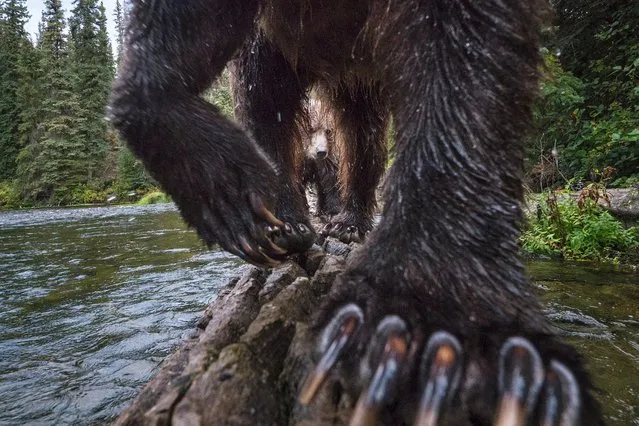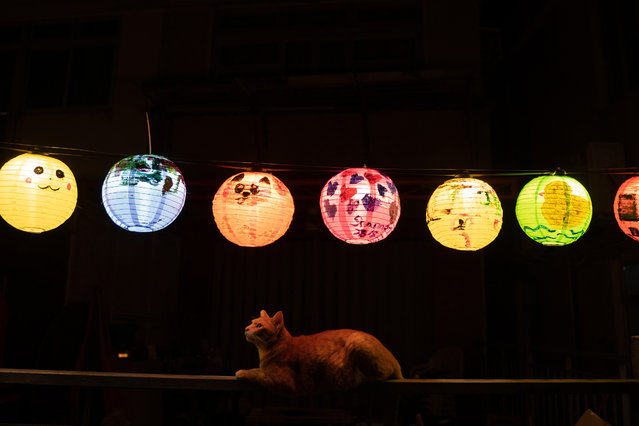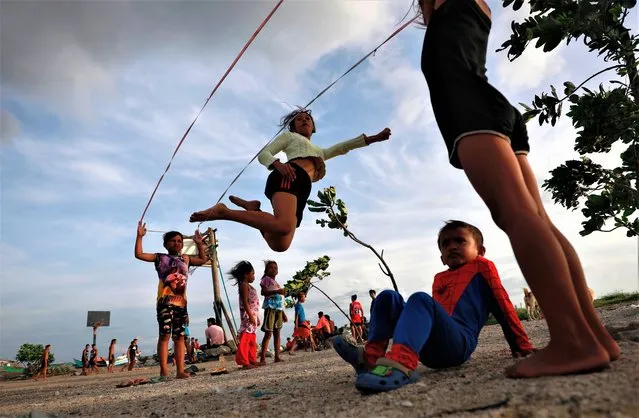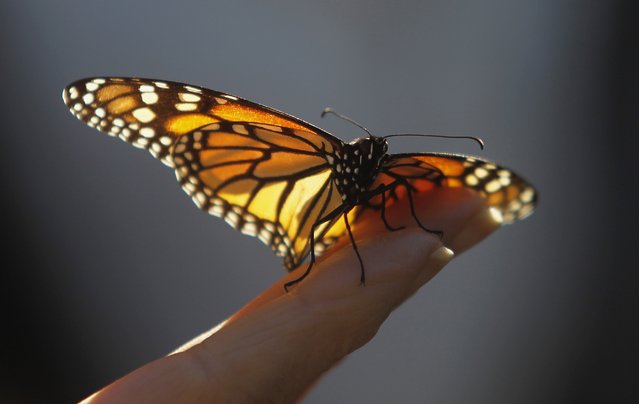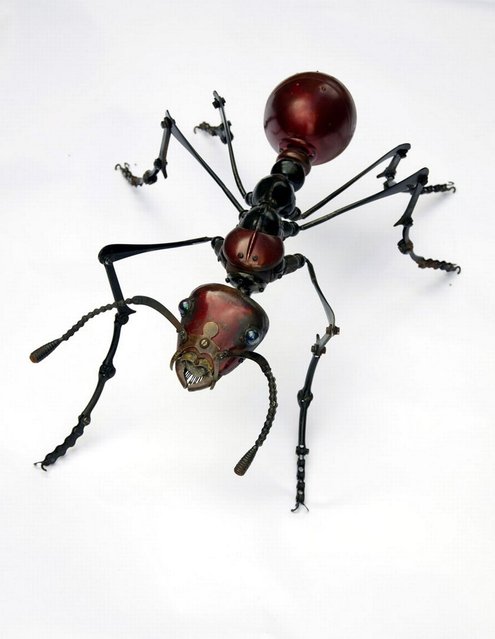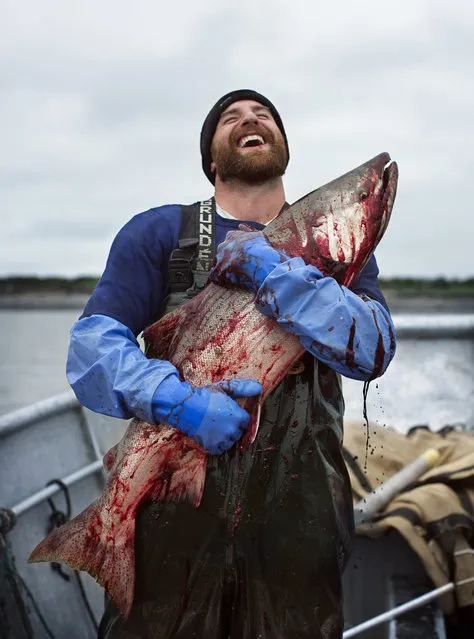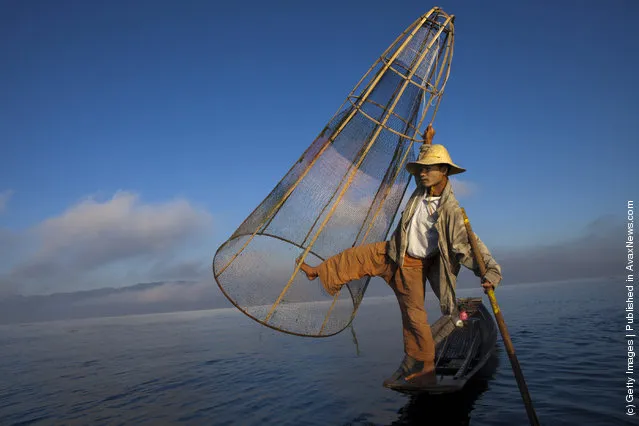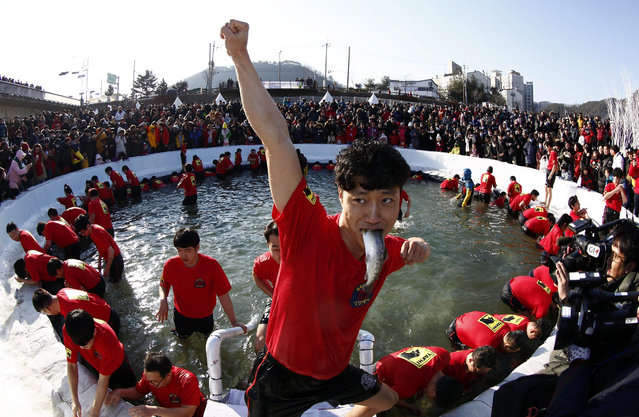
A visitor celebrates after attending a bare hand fishing event in a frozen river during the Hwacheon Sancheoneo Ice Festival at Hwacheon-gun, Gangwon province, South Korea, 09 January 2016. The festival runs under the theme “Unfrozen Hearts, Unforgettable Memories” from 09 January to 31 January 2016. (Photo by Jeon Heon-Kyun/EPA)
11 Jan 2016 08:04:00,post received
0 comments

